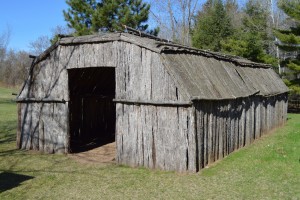American Revolution
General Overview
There were tensions between Britain and the colonies leading up to the Revolutionary War that had begun years before the start of the war. The big act of defiance from the colonists came with the Boston Tea Party in 1773. A large group of men dressed up as Indians and dumped tea into the Boston Port to protest the British rule. War began April 17, 1775 between the 13 Colonies of the new land and Britain. At the time the 13 colonies were acting each as their own government and were not prepared for war. George Washington was a rich farmer in the Colony of Virginia, he ultimately became the Commander in Chief in 1775 and led the Colonists to war.
On July 4, 1776, the 13 colonies declared their independence from Britain. The Constitution of the United States was enacted into law. Left out of the history books was the influence that the Iroquois Confederacy had on the writing of the Constitution by Jefferson and Benjamin Franklin. Benjamin Franklin had written (using savage as an ironic term) “The “savages” are, in fact, as civilized or more civilized than the Whites: it is the Whites who must rely upon force, punishment, and prisons to enforce good behavior.”
Through a series of battles where both sides lost a tremendous amount of life, the war lasted until 1783, when Britain was forced to recognize the independence of the 13 colonies.
Samuel Kirkland encourages Oneidas to fight with the Colonists
Battle of Oriskany
On August 6, 1777, General Herkimer, 800 soldiers and 60 Oneidas were ambushed on their way to relieve the seige at Fort Stanwix. The British had convinced the Mohawks to join them in their ambush. The Battle of Oriskany is considered one of the most bloodiest of all wars in the Revolutionary War. For Native people is represents a time when the Iroquois Confederacy had been broken and Indians were fighting Indians.
Valley Forge and Barren Hill
During the winter of 1777 George Washington and his troops made their winter camp twenty five miles west of Philadelphia at Valley Forge. The Continental Army faced some of its worst conditions during winter and the Oneida came to aid their American allies. Yet, over the years, that kindness has all but vanished from mainstream American History.
The campaign season of 1777 came to a close as the winter months approached. The war was not going well for the Americans. The British had captured Philadelphia in September, the first Capital to the Rebels and home to the Continental Congress. After the Congress escaped, Washington and his troops made their winter camp at Valley Forge. The site was a strategic location from which the army would be able to monitor the British.
Conditions worsened for the already weary army when a harsh winter set in and it became harder for the army’s supply system to get goods to the soldiers. They were starving and had inadequate supplies and clothing. It was even noted that the soldiers’ feet would bleed due to their feet freezing in their boots which served little protection.
Tribal Historian Loretta Metoxen, wrote “Chief Shenandoah (the deer) was an unwavering friend to the Americans. He believed in the cause of the Colonist and warned his white neighbors of British invaders. It was he and his Oneidas who saved Washington’s starving army at Valley Forge by bringing them several hundred bushels of corn.”
Several hundreds of bushels would convert into 70 lbs per bushel and the route was no easy one. The Oneidas travelled over 200 miles from Fort Stanwix to Valley Forge. Even with this amount of corn it wasn’t enough to adequately feed all the troops but was considered a great deed by the Oneidas.
“The soldiers were so ravenously hungry that they had to be held back from eating uncooked dried corn which would have bloated their bellies.” says Loretta.
An Oneida woman named Polly Cooper had stayed with the troops and showed them how to cook the corn. There are two different accounts of how she was recognized. In one story, Washington had offered her money but she refused. Martha Washington had bought her a shawl, bonnet and hat from Philadelphia. What we do know is that Martha gave Polly one of her shawls.
Sullivan’s Campaign
General John Sullivan was selected by George Washington to deal with the tribes who had sided with the British during the Revolutionary War. This included; the Mohawks, Cayuga, Onondagas and Seneca tribes. The Oneidas and Tuscarora had sided with the Colonists during this time. It was named the Sullivan Campaign and General Sullivan along with his army of 3500 men took no mercy. He destroyed at least 40 villages, including burning their crops and homes. This destruction lead to over 5000 Iroquois being displaced and many starved or froze to death during the winter months.
Oneida Tribal Belt circa 1783, end of American Revolution
The treaty of Paris in 1783 formally ended the Revolutionary war and the tribal belt was assembled in 1784. The reason we have the tribal Oneida belt with the 6 diamonds is that signified the coming together of the 6 Iroquois Nations after the war because they had been split up during the war.
“Now, it is this wampum that the chiefs made as a record after the time when the war ended between Washington and the British. It was the Oneidas who fashioned this wampum to remind each other of their territories of the Six Nations. When we begin reciting this wampum, we always start to the right side. First, we have the territories of the Mohawk nation. In the middle, the diamond shape represents their fire. They are also known as the Keepers of the Eastern Door. All matters that come from the east from other tribes, they Of importance, then it is brought to the Six Nations Confederacy. The next square represents the territory of the Oneida Nation and it’s fire. Next the Onondaga Nation’s territory and it’s fire. They are also known as the central fire of the Six Nations. All matters pertaining to the Six Nations are brought here. Next is the Cayuga Nations Territory and it’s fire. The next one is the Seneca Nations territory and it’s fire. They are also know as the Keepers of the Western Door. All matters coming from the west are brought here, before they would go to the Six Nations Confederacy. Next we have the Tuscarora Nation and it’s territory in the middle represents their fire. This wampum is always in the care of the firekeeper of the Oneida Nation of chiefs. Every so often it would be taken out and it would be recited to remind everyone of it’s meaning. Now this is as much as I can convey at this time so these are all the words.” (Interview with Oneida Faithkeeper, 1996)






